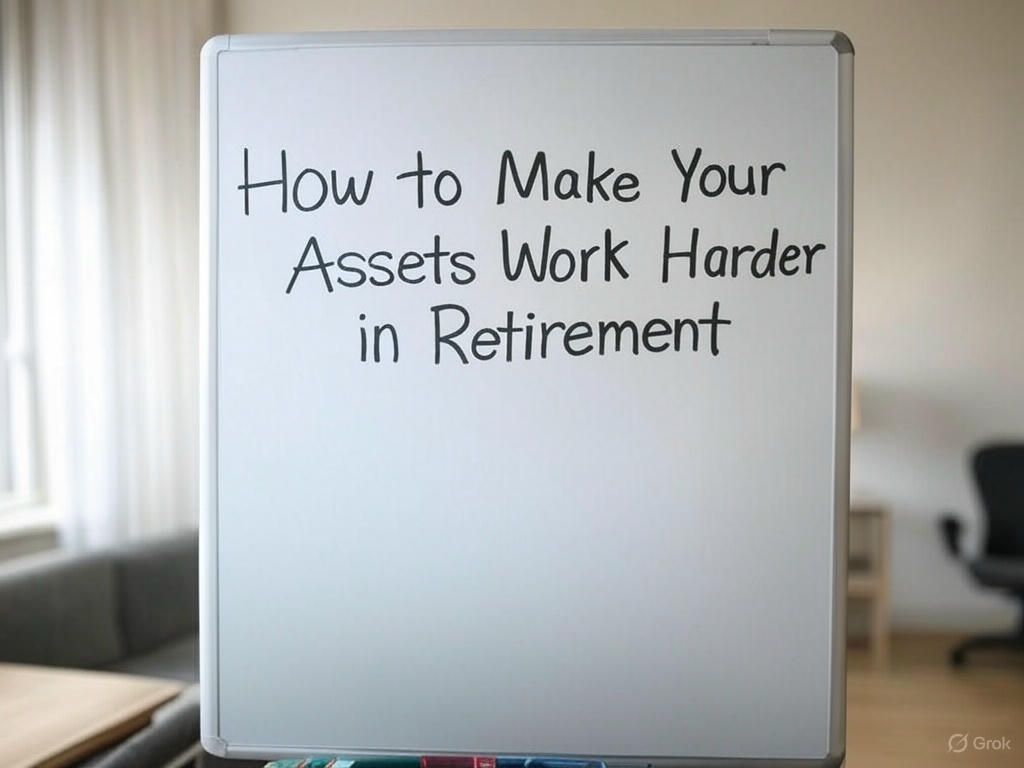How to Make Your Assets Work Harder in Retirement

Retirement is a time to relax, enjoy the fruits of your work and lead life to your conditions. However, it is also a time when financial stability becomes even more critical. It is essential that your assets continue to grow and generates an income without a regular salary check. The good news is that there are several strategies that you can use to make your assets more difficult for you to ensure that your retirement years are financially secure.
In this article we will examine various approaches to optimize prosperity and to improve the financial position during retirement. From traditional investments to more innovative financial instruments, these strategies can help you maximize your assets and generate a steady income current.
Use your investment portfolio
Diversification is the key
Careful diversification is one of the most reliable ways to ensure that your assets in retirement continue to work. By spreading your investments in various investment classes – measures, bonds, real estate and even alternative investments – you can reduce risks and at the same time improve the potential returns. In retirement, the focus should easily shift from growth to stability and income generation. This can be achieved by assigning part of your portfolio for income assets such as dividend numbers, bonds or real estate.
Remouting regularly
Over time, your portfolio may differ from its intended distribution of assets due to market fluctuations. If you regularly balance your portfolio, you can maintain the risk level with which you feel comfortable and ensure that your assets match your age goals. The new compensation also offers the opportunity to use the favorable market conditions and to help them optimally use their assets.
Real estate type
Rental objects
Real estate is a popular wealth class for many pensioners because they can deliver a constant cash flow. The possession of rental objects offers you the double benefit of the increase in value of property and rental income. If it is managed well, rental objects can be a reliable income flows that will help you maintain your desired lifestyle in retirement.
Real estate can require a significant preliminary investment, can pay off in the long term. It is of crucial importance to carefully select properties in places with strong returns in order to maximize the rent requirement. Management of costs such as maintenance and property taxes is the key to ensuring profitability.
Real Estate Investment Trusts (Reit)
Real Estate Investment Trusts (Red) can be an excellent option for those who prefer a more hand-off approach for real estate investments. These companies have and operate income -like real estate and offer pensioners the opportunity to invest in real estate without the responsibility of real estate management. Already pay a significant part of their income to shareholders and make them a good choice for income generation.
Consider a reverse mortgage
If you have a house and look for a way to unlock your own capital without sale, an inverted mortgage can be explored. Reversed mortgages enable homeowners aged 62 or older to convert part of the equity of their own home into a loan without the need for monthly payments. Instead, the loan is repaid when the homeowner sells, pulls out or looks.
There are different types of reverse mortgages, each with different conditions. The most common is the Home Equity Conversion Mortgage (HECM), which is insured by the Federal Housing Administration. Another option is a proprietary reverse mortgage that is offered by private lenders and enables homeowners to access more equity than HECM loans.
While the opposite mortgages can deliver a steady income current, they carefully deviate the advantages and disadvantages. The equity of your house will take over over time and the fees can be high. For some pensioners, however, a reverse mortgage offers a practical way to supplement their income without selling or changing.
Explore pensions
Annuities are a popular option for pensioners who are looking for a guaranteed income current. With these financial products, you can convert a flat -rate amount into regular payments over time. There are different types of annuities, including a firm, variable and indicated, each different risk and return levels.
Pensions fixed
A fixed annuity offers foreseeable income payments and makes it an attractive option for those who appreciate stability. The payment amount is determined at the time of the purchase and remains the same for the duration of the pension contract.
Variable pensions
With variable annuities you can invest in a selection of the underlying assets such as stocks and bonds, and the income payments fluctuate due to the performance of these systems. While you offer the potential for higher returns, you also have more risks.
Indexed pensions
Indexed annuities combine characteristics of solid and variable annuities. The returns are linked to a stock exchange index such as the S&P 500, but there is usually a upper limit for the returns. These annuities offer growth potential with a certain protection against market depression.
Annuities can be particularly useful if you want to secure a predictable long -term income flows that contributes to supplementing social security benefits and other sources of income.
Optimize tax -related accounts
In retirement, the management of taxes becomes even more important. Fortunately, several tax -disadvantaged accounts can help you reduce your tax burden and work your assets harder for you.
Traditional Iras and 401 (K) S
With traditional IRAS and 401 (K) you can move taxes to your contributions and your investment growth until you start retirement. This tax growth can lead to a significant accumulation of assets over time. Pay attention to the required minimum distributions (RMDS), which prescribe withdrawals from the age of 73 to avoid punishments.
Roth Iras and Roth 401 (K) S
On the other hand, Roth Iras and Roth 401 (K) S enable tax -free retirement withdrawals if they meet the requirements. While you do not receive any advance tax deduction for contributions, the potential for tax -free growth in retirement can be of great benefit if your tax class is lower.
Health Sparkoncurt (HSAS)
Health Saving’s accounts (HSAS) are another tax -rated vehicle that makes your assets more difficult. If you have a high administrative guiding plan, you can contribute to an HSA and enjoy three times the tax advantages: the contributions are tax deductible, the growth is tax -free and the withdrawals for qualified medical expenses are tax -free. This makes HSAS a powerful instrument for managing health costs in retirement.
Minimize debt
Debt are one of the greatest obstacles to the financial freedom in retirement. High -interest debts such as credit card credit or personal loans can significantly undermine your savings and income. Payment or eliminating debts before retirement is of crucial importance for further information on your income.
First, consider the repayment of the repayment of debt with high interests and avoid taking new debts in retirement. While it may not appear to be direct that your assets work harder, the elimination of debts is more released from your income for savings and investments, which gives your assets the opportunity to grow more efficiently.
Diploma
Retirement is an opportunity to enjoy the work of your life and use the advantages of your efforts. However, if you make sure that your assets will continue to support you during this time, thoughtful planning and strategic management are required. By using your investment portfolio, taking into account real estate options, researching reverse mortgages and using tax-fighted accounts, you can create a robust financial strategy that works more difficult for you.





